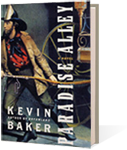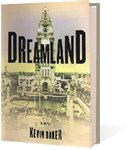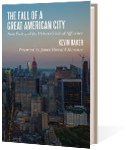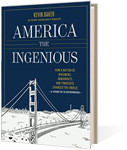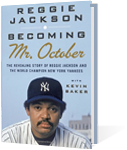Authentic grassroots movement or corporate conspiracy?
The answer: Both and neither.
It started out on the prairie, just as the first populist movement did. Or, at least, in a city on the plain.
On the morning of Feb. 19, 2009, Rick Santelli, a former commodities trader and V.P. at Drexel Burnham Lambert, was feeling provoked by the Obama administration’s Homeowner Affordability and Stability Plan, a $75 billion proposal to reduce the monthly payments of the 9 million homeowners then facing foreclosure. It was Santelli’s job to get provoked; he had been working the same shtick at CNBC for 10 years, pumping himself into a high dudgeon over one thing or another.
Prompted by the CNBC anchors in New Jersey, Santelli, on the floor of the Chicago Board of Trade, looked up at the camera zooming in on him and accused the government of “promoting bad behavior” with the program. Then he sputtered out his belief that, instead of having to “subsidize the losers’ mortgages,” we should have a national referendum to ask if we should “buy cars and buy houses in foreclosure and give them to people that might have a chance to prosper down the road, and reward people that carry the water instead of drink the water.”
One of the traders at work next to Santelli, no doubt considering himself a “water carrier,” chimed in sardonically, “That’s a novel idea.” The remark was followed by a few scattered claps and whistles, leading one of the vastly amused studio hosts at CNBC to declare, “They’re like putty in your hands!”
Santelli then declared of the nearly empty trading floor, “This is America! These guys are…my guess is, a pretty good statistical cross-section of America, the silent majority!” He “poll[ed]” the traders, most of whom didn’t appear to be listening: “How many of you people want to pay for your neighbor’s mortgage that has an extra bathroom and can’t pay their bills?” Rewarded with a smattering of boos, Santelli asked triumphantly, “President Obama, are you listening?”
He then informed viewers that the country was fast moving toward Cuba, where they “used to have mansions and a pretty good economy” but where “they moved from the individual to the collective. Now, they’re driving ’54 Chevys, maybe the last great car to come out of Detroit.”
Told by a CNBC commentator he sounded like “a revolutionary leader,” Santelli embraced the role: “Somebody needs one. I’ll tell you what: If you read our Founding Fathers, people like Benjamin Franklin and Jefferson…what we’re doing in this country now is making them roll over in their graves.”
His call to arms, in the end, was the vague suggestion that “all you capitalists” have “a Chicago Tea Party in July,” where, he promised, “we’re going to be dumping in [to Lake Michigan] some derivative securities.”
Santelli’s rant, as it came to be known, like Paul Revere’s ride or Pickett’s charge, is almost baffling in how slight it really was relative to the influence it would project on history. It was the same old, same old toxic brew of downward class hatred, schadenfreude, and free-floating anger that has been a regular trope in right-wing politics for decades, combined with a willful naïveté about how the world works. It was standard, even comical, hey-you-kids-get-off-my-lawn stuff, little more than a checklist of your uncle’s post-Thanksgiving-dinner, fourth-Scotch tirade, right down to the bit about how Detroit hasn’t made a great car in 60 years (and what was the Mustang, Rick, chopped liver?).
But the rant’s timing was perfect: Fearmongering over the election of Barack Obama, who had been sworn in as president barely a month before, it was also a lightning bolt fired into a primordial soup of unprecedented economic anxiety. It turned out the revolution wastelevised, and it was about to go viral. Santelli’s rant would launch the movement that dominates American politics today: the Tea Party.
“When Santelli did his thing in February, I thought…, ‘Wow, I gotta get in,’ ” said Mark Kevin Lloyd, then a small businessman watching his firm dissolve. “It was kind of like the big bang. Once it came together, it started to take on a life of its own.”
“What set off what we now consider the Tea Party movement was certainly the Rick Santelli rant,” said Sal Russo, a longtime conservative political consultant in Washington and a former aide to Ronald Reagan.
Six years into its existence, the Tea Party continues to score tremendous and wholly unexpected victories, ripping apart the leadership of the Republican House majority and hijacking the party’s presidential nominating process. The Tea Party’s Freedom Caucus in the House of Representatives hastened the departure of Speaker John Boehner (after whipping his former No. 2, Eric Cantor, in a primary last year), and arrested the ascension of the next Republican in line, Rep. Kevin McCarthy—who had been considered a right-wing radical himself just a few short years ago. The new speaker, Paul Ryan, granted the Freedom Caucus what was essentially veto power over his own election.
In the race for the Republican presidential nomination, meanwhile, Tea Party darlings such as Sen. Rand Paul and Gov. Scott Walker have floundered. But other Tea Party favorites, including Donald Trump, Ben Carson, and lately Texas Sen. Ted Cruz, have been dominating the field and the conversation. They have—particularly Cruz—by and large championed the Tea Party’s desire to slash most or all discretionary federal spending; defund, repeal, and replace the Affordable Care Act; abolish most taxes and nearly all government regulations on business; end “corporate welfare”; move toward privatizing Social Security, Medicare, and Medicaid; and not least, use whatever legal means necessary to achieve these goals, including shutting down the federal government.
A look at the origins of the movement and its early leaders reveals it to be one of the most complex and obdurate political phenomena in our history. Whatever America’s future is to be in the 21st century, it will have to go through the Tea Party.
Tea Party adherents, and there are plenty of them—at least one-fifth and sometimes one-third of the electorate tell pollsters they support the Tea Party and/or its goals—say that it has changed their lives and dismiss the idea that they joined up because of what any news network or billionaire had to say. They trace their conversions not from right-wing media, or some clever Washington lobbyist, but from the ideas promulgated by figures as diverse as Ron Paul and Glenn Greenwald, Frédéric Bastiat and Ronald Reagan. The Tea Party is a genuine grassroots movement, started and perpetuated by aroused citizens convinced that something has gone terribly wrong with their country. They have joined with like-minded friends and neighbors to set things right, just as the framers of our Constitution intended.
At the same time, the Tea Party is also a manufactured right-wing conspiracy, right down to its name; conceived, test-driven, and funded by the Koch brothers and their fellow plutocrats.
The Tea Party is both these things and neither. The Tea Party is an impulse. It is a reaction, a sentiment. It is an amazingly effective electoral tool. It is a diversion, a hobby, a reason to get up in the morning—just as politics has always been a pastime for a portion of the American people. It is a calling, it is a vocation, it is great good fun, and it is the long con.
The Tea Party’s refusal ever to coalesce into an actual party, or even a single coherent movement, is the key to its power. Right now, the Tea Party sits on the political system like a giant ganglion, able to check its every movement without ever directly taking power. It is a brilliant political strategy, through which it has pushed American politics farther right than it has ever been.
It is also an incredible abrogation of responsibility. Refusal to become a formal political party enables the Tea Party to avoid dealing with the full multitude of issues party leaders must address, or making hard choices. The Tea Party never governs; it simply demands. The Tea Party is the politics of rejection, of the refusal to trust anyone or any institution. It is the politics America has been moving toward haltingly but continually, on both the left and the right, for more than half a century—a politics of purity, of fantasy, a politics of disgust and rejection.
The question this forces is how any republic, any modern democracy, can function when such a movement is driving the bus. We may be about to find out.
It is easy to see how the Tea Party’s birth spasms presaged the phenomenon of Donald Trump and the host of similar “outsiders” contending for the presidential nomination of the Republican Party. (Santelli’s evocation of the Nixonian “silent majority” in his rant would even become a staple of Trump’s stump speeches.) Over the last month this Maoist guerrilla of a political movement—always eluding and counterpunching, refusing to be pinned down or cornered—has reduced the House of Representatives to something from “a banana republic,” according to one of its leaders, and is threatening to shut down the federal government for the second time in three years.
“Rick Santelli, when he had his rant, he let it rip,” remembered Lloyd. “Which is the same thing Donald Trump does.”
Lloyd had watched his well-drilling business, which employed 12 people, unwind with the housing market, and he was apprehensive about the size of President Obama’s proposed stimulus package.
“You couldn’t quite put your finger on it, but you knew. All of a sudden there was this incredible clarity,” he said.
Calls to hold an actual tea party protest were soon ringing out all over the country—or at least the right-wing media. A clip of Santelli’s rant appeared almost immediately on The Drudge Report, and before the day was out, the libertarian lobbyist Eric Odom had registered the domain name officialchicagoteaparty.com. By the next day, the rant was all over Fox News, and Odom had joined with FreedomWorks, an oil-funded lobbying group, and Americans for Prosperity, founded by the Koch brothers, to put up a Facebook page calling for nationwide demonstrations:
“Rick Santelli is dead right! Enough bailouts of everyone who acted recklessly! It’s time to stand up for all the regular people who play by the rules! Taxpayer Tea Party!”
So when critics say the Tea Party was hijacked by corporate money, it’s not exactly true—corporate money was there from day one.
People around the country heard the call. As chronicled by Jane Hamsher at Firedoglake, protests soon broke out in Cincinnati; Green Bay, Wisconsin; and Harrisburg, Pennsylvania. Feb. 27 saw tea parties outside the White House and in eight more cities, coordinated by John O’Hara of The Heartland Institute and J.P. Freire, then with The American Spectator, and apparently suggested by Tom Gaithens, a FreedomWorks “Minuteman.” (Although, tellingly, Fox News would report that more than 40 cities held similar rallies that day, relying on a Tea Party source. The claim lives on at Wikipedia.)
“Folks rose up and came together and said, ‘OK, if we want to make a greater impact, we need a large, nationwide movement,’ ” remembered Matthew Hurtt, then a 22-year-old Republican Party activist in Nashville, Tennessee.
“It exploded the next weekend,” recalled Russo. April 15 brought a “Tax Day Tea Party” to an estimated 750 towns and cities across America, from East Hampton, New York, to Yakima, Washington. The event had been promoted robustly online, again by FreedomWorks but also by RFCRadio.com, assorted right-wing leaders, and Fox News, which dispatched hosts and commentators to rallies. Newt Gingrich told a crowd in New York to throw the bums out of Congress, while Gov. Rick Perry entertained a thousand protesters gathered in Dallas.
The biggest crowd seems to have been some 2,000 people who gathered in Houston, while most assemblies drew 200 to 500 individuals at most (though attendance figures for any Tea Party event are always a matter of fevered dispute). What they lacked in numbers, the Tea Partyers made up in media-friendly enthusiasm. They dressed in what would soon become familiar Revolutionary War reenactor outfits, draped tea bags from eyeglasses and umbrellas, carried “Don’t Tread on Me” flags, and dumped a box of tea on the White House lawn (an anti-bomb robot had to be summoned to retrieve it).
Chronicle of a Tea Party Foretold
What Santelli had tapped into, whether he intended it or not, was a chronicle of a populist uprising foretold. The term “tea party,” and the idea of leveraging corporate money to get its interests reflected in the public discourse that FreedomWorks and AFP represented, went back much farther.
It may have begun with a once obscure, now underground legend of a document written by Lewis Powell in 1971, just before his nomination to the Supreme Court, as Jane Mayer noted in a 2010 article in The New Yorker exposing the Tea Party’s ties to the Koch brothers.
The Powell Memo, as it came to be known, was sort of Santelli’s rant on paper. Written for the U.S. Chamber of Commerce’s Education Committee, it called on American business to mobilize politically and reassert its power, “aggressively and with determination…without the reluctance that has been so characteristic of American business.”
A man at a Tea Party rally in Lafayette Park across from the White House, April 15, 2009. (Photo: Jim Young/Reuters)
The memo was leaked to columnist Jack Anderson in 1972, but corporate America had already got the message. From 1968 to 1978, the number of corporate public affairs offices in Washington, D.C., rose from 100 to more than 500, according to author David Vogel. The number of registered lobbyists grew from 175 in 1971 to almost 2,500 in 1982. Corporate PACs increased from fewer than 300 in 1976 to more than 1,200 by 1980. Most important, corporate lobbying money exploded, increasing from an estimated $100 million in 1971 to more than $3.5 billion a year today.
In the vanguard of the rush to the barricades were the Koch brothers. In 1977, they began spending what would grow to more than $100 million—and perhaps three or four times that amount over the years since—on winning the ideas war through contributions to right-wing lobbying groups and think tanks.
The term “tea party” also has its origin with the Kochs. Mayer traced how, in 1980, the Libertarian Party’s candidate for president, Ed Clark, announced that people of his political ilk would soon hold “a very big tea party” because they were so fed up with paying taxes. The vice president on Clark’s ticket: David Koch, who poured $2 million into the Libertarian effort that year.
The Kochs tired of direct participation in electoral politics soon after but not of the Libertarian Party’s extreme laissez-faire vision for America (particularly as it affected Koch Industries). The Kochs went back, Mayer wrote, to funding “seemingly independent organizations.” These rapidly metastasized.
It was the Kochs who, in 1984, begat Citizens for a Sound Economy, which begat FreedomWorks and Americans for Prosperity, the leading sponsors and organizers of countless early Tea Party events.
CSE opposed pretty much all taxes and government regulations on the industries that underwrote it. It received $7.9 million from the Kochs alone between 1986 and 1993, along with other considerable contributions from the oil, sugar, and tobacco industries. Big tobaccocontributed at least $5.3 million to CSE between 1991 and 2002; individual corporate donors included General Electric, Exxon, Hertz, and Philip Morris.
Appointed the first chairman of CSE was a 49-year-old former Libertarian and once and future Texas congressman named Ron Paul.
By 2002, although Paul had moved on, CSE had another idea for pushing its program: a “U.S. Tea Party project.” Its website featured a page that called for “another symbolic protest in the best tradition of our Founding Fathers.” It claimed that “our U.S. Tea Party is a national event, hosted continuously online, and open to all Americans who feel our taxes are too high and the tax code is too complicated.”
Then, on Dec. 16, 2007, the 234th anniversary of the Boston Tea Party, Paul’s presidential campaign held a fund-raiser in Boston. The rally was replete with protesters in full Minuteman garb and even a fife and drum corps. Some 400 supporters of the candidate met on the steps of the Massachusetts State House in Boston, then marched through the snow to Faneuil Hall, where they listened to speeches from Paul’s son Rand, and similar speakers. Out of respect for environmental regulations, the revolutionaries did not dump any tea in Boston Harbor but, The Boston Globe reported, tossed “banners that read ‘tyranny’ and ‘no taxation without representation’ into boxes that were placed in front of an image of the harbor.’ ”
The Boston march attracted the attention of Patrick Bailey, then a student at Georgia Tech. Bailey would be one of many younger recruits to the Tea Party from what he described as the “left,” or at least a sort of lefty libertarianism. He had begun to question, as a summer student in Barcelona, Spain, in 2006, the traditional conservative views he’d been brought up with. He started “reading a lot of Glenn Greenwald,” he said, but was attracted to the “ideological consistency” of Ron Paul.
As conservative columnist and Fox News contributor Michelle Malkin would point out, the Tea Party was far from being a bunch of Koch brothers drones, no matter how much money the billionaires spent. It had its own grassroots appeal, drawing thousands of regular Americans into political activism for the first time and building its own political culture. But it didn’t take long for the Koch brothers’ Astroturf organizations to recognize their low-tax, lax-regulation agenda in the new movement and see an opportunity to leverage it. Perhaps aware that people were becoming hip to their earlier methods of buying influence, the Kochs and their spokespeople made a pro forma denial that they “in any way direct [the Tea Party’s] activities” or fund them. David Koch told New York magazine, “I’ve never been to a tea party event. No one representing the tea party has ever approached me.”
Yet it was easy for Jane Mayer to demonstrate that the Kochs’ fingerprints were all over it. Verification came willingly, even gleefully, from their own employees: Peggy Venable, a paid operative for the Koch-created Americans for Prosperity, announced at a training session for the Tea Party in 2010, “We love what the Tea Parties are doing, because that’s how we’re going to take back America!” She went on to spell out how AFP intended to train and educate Tea Partyers and had provided them with lists of public officials to be targeted for defeat that November.
The movement was made a reality by, among others, an obscure Kentucky radio host who got listeners to ship 1,500 bags of pork rinds to Sen. Chuck Schumer. Then there was the plucky, decidedly un-corporate Keli Carender, aka “Liberty Belle”—a young Seattle schoolteacher and former actor whom Malkin described not inaccurately as “a young conservative mom who blogs” and who had begun organizing her own antitax “Porkulus Protests” weeks before Santelli’s rant.
Down in the trenches—or down in your neighborhood—the Tea Party wasn’t a hired congressman or a Washington lobbyist but your friend and neighbor, other “liberty-minded people,” as Waverly Woods, at the time the owner of three tanning salons in Virginia Beach, Virginia, described them to TakePart.
Adam Brandon is president and CEO of FreedomWorks, an oil industry–funded lobbying group founded by former House Speaker Dick Armey that called for demonstrations against a 2009 Obama administration program intended to help people stay in their homes. Sal Russo, a longtime Republican political consultant, helped organized such rallies. Mark Kevin Lloyd’s business was a victim of the housing bust; Lloyd got involved in the Tea Party after seeing Rick Santelli’s rant. Today he is chair of the Virginia Tea Party Federation. Matthew Hurtt was a Republican Party activist in Tennessee in 2009 who organized disruptions of town halls held that year by Democratic members of Congress; he now works for a political data provider in Washington, D.C. Waverly Woods, whose tanning salon business was hit hard by an Affordable Care Act tax on such establishments, chaired two Tea Party chapters in Virginia before taking a job at The Leadership Institute, which trains conservative activists.
“How do I get my legislator on the phone? The Tea Party tells you how,” explained Woods, an exuberant single mother in her mid-40s who tried the Republican Party and Glenn Beck’s 9/12 Patriots before discovering the Tea Party. “It teaches you how to find your legislator and how to get him on the phone. Here’s how you write an e-mail to him, and here’s what you say. You know, here are the talking points. Put it in your own words. We don’t feed people their opinions, we give everybody the facts, so that you can make your own opinion.”
Woods, who served as chair of both the Virginia Beach and the Hampton Roads chapters of the Tea Party before becoming a member of the board of the statewide Virginia Tea Party Federation, claimed to have helped bring out “thousands of people” for a Tea Party rally but mostly enjoyed the regular meetings of her local organizations, which drew “at least 70 people” every month. As Woods’ tanning salons succumbed to the Affordable Care Act’s tax on such facilities (as nearly 10,000 such businesses have, nationwide) the Tea Party offered a new venue of activity, a place to debate, to meet others. To organize.
Tea Party activists come across as affable, friendly individuals, even over the phone. Their fervor and their love of country are palpable. They are engaged and committed in an increasingly cynical and indifferent political landscape.
The local chapters would become one of the two enduring bonds that keep the Tea Party together. There are more than 40 of them in Virginia today, with roughly 75 to 100 members apiece. “The only requirement is that [attendees] have to be more than “a complaint coffee club,” according to Lloyd, now 55, who has served as chairman of his local Lynchburg chapter and is in his second tour as chairman of the Virginia federation.
The other bond is the Internet. “I would probably say [the Tea Party] was the first major social movement that happened on Facebook and Twitter,” said Adam Brandon, communications director of FreedomWorks at the start of the Tea Party movement. Lloyd concurred: “If Facebook went away, I do believe the Tea Party movement would disappear.”
Just whom one is likely to meet at a Tea Party meeting tends to confirm the suspicions of those who see the movement as simply a rebranding of the right wing of your already right-wing Republican Party. Numerous polls and surveys have found that Tea Partyers tend to be men 50 or older. Unlike the starving farmers of Texas or Kansas who made up the original Populist movement 140 years ago, they are likely to have above-average incomes and educations. They are also overwhelmingly white Republicans from suburban or rural communities who are much more conservative, much more pessimistic about the future of this country, and much more angry at Barack Obama than the rest of their party.
Lloyd concedes most of this but insists that in Virginia, at least, a chapter leader is most likely to be “a 60-year-old woman, who is probably still working.” The idea that the Tea Party is mostly white, he claims in the face of all available evidence, is “the biggest misnomer out there.” If “you go to Texas, you have whole Tea Parties that are Hispanic…. Here in Virginia, we have some great Hispanic folks.”
“We have black people; we have Asian people,” said Woods. Republicans, Democrats, and Libertarians are all represented at Tea Party gatherings, she claimed.
Ideologically, most Tea Partyers are hard right on issues of defense, foreign policy, and most social issues. But after some bruising early fights with some whom Lloyd characterized as “hard-core libertarians,” Tea Partyers have tended to narrow their official positions to issues of “big government” alone. This has become one of the keys to their power.
“As long as they’re for limited government, fiscal responsibility, constitutional adherence, and holding our elected officials accountable,” anyone is welcome at a chapter meeting, according to Lloyd.
“[A Tea Partyer is] just your average citizen that is tired of the egregious intrusion of government. And they are very strong constitutionalists,” said Woods. “They definitely believe if it’s not in the Constitution, you shouldn’t be doing it.”
What this means is that TARP is the government “picking winners” and “corporate welfare,” Lloyd said. It would have been better for the federal government to let the world’s financial system collapse than prop up Wall Street in 2008. The stimulus was a wasteful mistake that did nothing to help end the recession. Obamacare was an egregious overstepping of government’s proper role, “unelected bureaucrats” running amok, according to Matthew Hurtt. His main intellectual influence, the 19th-century French free trade absolutist Frédéric Bastiat, wrote that a government engaged in anything beyond protecting each individual’s “person, his liberty, and his property” was taking part in “legalized plunder”—which Hurtt also believes to his core. Some of the other things Tea Partyers told me were that the 2008 financial crisis occurred because of “the government saying, ‘You must lend money to individuals who definitely will not be able to pay it back’ ” (Hurtt). Also that the military has been dangerously hollowed out because the “president wants to make us a third world country” (Woods). Social Security is telling “people the year they should be retiring” (Bailey), and “there are thousands” of Muslim refugees who have been brought to the U.S., so many that at the Mall of America, “if you are not a Muslim…, it’s dangerous for you” (Lloyd).
This is not a movement prone to mincing words.
First Actions
In the summer of 2009, the Tea Party would test its strength voicing opposition to Obamacare. Supporters flooded town hall meetings called by Democratic Congress members to explain the plan. This was, again, hardly spontaneous. Their appearances and tactics were coordinated by websites such as that of Tea Party Patriots, another somewhat mysterious, supposedly grassroots group inspired by Santelli’s rant (though funded by a $1 million anonymous gift), which urged them, ThinkProgress reported, to “pack the hall” and to make “short intermittent shout outs. The purpose is to make [the representative] uneasy early on.… The goal is to rattle him, get him off his prepared script and agenda. If he says something outrageous, stand up and shout and sit right down. Look for these opportunities before he even takes questions.”
Tea Partyers took these directions to heart, disrupting proceedings again and again by standing suddenly to recite the Pledge of Allegiance, sing patriotic songs, scream, boo, and shout down representatives with denunciations of “socialized medicine” or the infamous “death panels.”
Hurtt, who had just moved to northern Virginia to become a full-time conservative activist, went to a town hall deliberately trying to provoke his new Democratic representative, Jim Moran, who, Hurtt said, “was very well known in this area as a short-tempered hothead.” Hurtt was “honestly shocked that members of Congress were still taking part in [the town hall meetings]” because it was so easy to disrupt them.
“It’s the first time conservatives realized they could go out and be in your face,” said Hurtt. “You know, the left is…good at this sort of activism.” He took many of his cues from Confrontational Politics, a manual of disruption penned by Gun Owners of America founder and former California state Sen. L. “Bill” Richardson. “Conservatives—what I’ve seen and what I’ve been told, and what I’ve noticed is—are largely uncomfortable with that sort of thing.… And this was their first opportunity to do that. So, it was disruptive and loud.”
These Democratic members of Congress all saw town hall events, which they called in 2009 to answer questions from constituents, disrupted by Tea Party activists. All five were voted out by 2014.
When Moran and his guest, 2004 presidential candidate and onetime Democratic National Committee Chair Howard Dean, attempted to answer written questions from the audience, Hurtt and his companions shouted them down. When asked if this didn’t make for an ugly scene, Hurtt, who can be almost achingly earnest talking about the need to take care of poor and outcast Americans of all kinds, talked about the Chicago community organizer who was an early influence on Barack Obama.
“Saul Alinsky talks about the haves and have-nots. So the have-nots must insert themselves in a way that tends to be more aggressive than the haves,” said Hurtt, redefining Alinsky’s have-nots as “the people who want to limit government.”
Elsewhere, dozens of raging sign-carrying protesters confronted Democrats such as Bruce Braley of Iowa and longtime Florida incumbent Allen Boyd. Tim Bishop, a veteran incumbent from Long Island, canceled his town halls—which he had been holding since 2002—after Tea Party protesters broke up his public meetings, shouting insults at him over not only Obamacare but also his positions on matters from energy policy to the bailout of the auto industry. In the end, Bishop had to be escorted to his car by police past the furious demonstrators. Rep. Dan Maffei, a freshman Democrat, also needed police intervention to restore order when his town hall meeting at a Syracuse middle school was broken up by a Tea Party mob.
Lloyd, by summer 2009 fully engaged in electoral politics, led his own mob to disrupt the town meetings of freshman Democratic Rep. Thomas Perriello, whom Lloyd still delights in calling “Little Tommy the commie.”
Mike Troxel, a Tea Party organizer in Lynchburg, posted what he thought was Perriello’s address on his blog, “just in case any of his friends and neighbors want to drop by and say hi and express their thanks regarding his vote for health care.” Troxel, a 2005 graduate of Jerry Falwell’s Liberty University, said of the posting, “I was a journalism major in college, so I have every reason to believe my research is accurate.”
Troxel had mistakenly posted the address of Perriello’s brother, where he lived with his four children, all under the age of eight, and his wife. Someone cut the line of the house’s propane tank under cover of night. Troxel was nonetheless largely supported by the Lynchburg Tea Party, which subsequently made him its vice president.
The violent intimidation that occurred at the 2009 town halls was reminiscent of the melee in Miami when authorities were trying to count votes in the 2000 presidential election. GOP operatives, many of them congressional staffers, were bused down from Washington; “several people were trampled, punched or kicked when protesters tried to rush the doors outside the office of the Miami-Dade supervisor of elections,” The New York Times reported, and the canvassing board subsequently decided to halt the count.
Perriello lost his congressional sea in 2010. Maffei lost his reelection bid by nearly 20 points. By 2014, all of the Tea Party targets mentioned above had been voted out of Congress, save for Moran, who retired, and Braley, who ran for Senate and was trounced by Tea Partyer Joni Ernst, best known for her ads trumpeting her skill at castrating hogs.
No way, shape, or form do I believe [President Obama] loves this country. Or Americans. He sabotages this country at every turn. Every opportunity.
The Tea Party Goes to Washington
After shutting down the town halls, it was time for the Tea Party to find its way to Washington, the signal that any political movement has arrived. On Sept. 12, 2009, an estimated 75,000 thousand supporters gathered at the National Mall, the culmination of a Taxpayer March on Washington.
Bringing the movement to the capital is a long tradition in American populist politics, beginning with Coxey’s Army, a Populist offshoot that managed to wrangle maybe 2,000 unemployed men to Washington in 1894. They started a legacy of meeting in the capital that would come to include every sort of popular movement, from the Ku Klux Klan to the Nation of Islam and most famously the Bonus Army of 1932 and the civil rights March on Washington of 1963.
The Taxpayer March on Washington was organized by Matt Kibbe, a former CSE activist who would move on to FreedomWorks. Many participants were attracted by a 34-city, 7,000-mile promotional bus tour put together by Sal Russo’s Tea Party Express PAC. Other Tea Party groups backed by major political players and corporate money played major roles in sponsoring the rallies, including the 9/12 Project; the National Taxpayers Union, an antitax lobby group founded in 1969 by a private investor; The Heartland Institute, today the primary vehicle for oil-industry-funded climate change denial; Americans for Tax Reform; ResistNet (soon to become the Patriot Action Network); and Americans for Prosperity.
For a rally held by a populist uprising, the Taxpayer March featured a surprising number of incumbent members of Congress—all of them Republicans—including Mike Pence, Marsha Blackburn, Tom Price, and Jim DeMint. The grand convocation—and other, smaller Tea Party rallies around the country—received lavish coverage from Fox News and right-wing radio-talk-show hosts.
Also addressing the crowd was former Texas Rep. Dick Armey, whose presence seemed to embody all the contradictions of the Tea Party. Armey served 18 years in the House, including eight as majority leader. He resigned in 2003 to take a lucrative position with the multinational law firm and Washington influence shop DLA Piper—currently the third-largest law firm by revenue in the United States and a major inside-the-beltway player, just the sort of wheeling-and-dealing establishment entity the Tea Party claims to detest. Armey became cochair of CSE, from which he promptly spun off FreedomWorks the next year, giving himself the top job. That paid him $500,000 a year along with first-class air travel around the United States, over and above his lobbying salary. (Adam Brandon insisted to TakePart that FreedomWorks was always “a grassroots group.”)
Lloyd remembered that first Washington rally fondly: “We all got along. Everybody was kind to everybody else. The anger and frustration had a target.”
That target tended to be, for the most part, the president of the United States, depicted in the now infamous posters as Hitler or the Joker. It was an early manifestation of the highly personalized contempt and loathing most Tea Partyers hold for President Obama. Tea Partyers don’t much like high-spending, deficit-running George W. Bush, but Barack Obama, many are convinced, is simply not a legitimate president and more likely a malevolent Islamic agent of some sort.
“No way, shape, or form do I believe that man loves this country. Or Americans. He sabotages this country at every turn. Every opportunity,” said Waverly Woods.
Lloyd thinks the 2008 election was celebrated by “the bad guys” in Iraq because they believed “[President Obama] was sympathetic to the extremist Muslim convictions, which he has turned out to be” by “allowing” some “nefarious things going on with Islamic groups,” such as getting money and arms to Hamas.
Even Sal Russo was disappointed when John McCain, in his 2008 campaign, corrected those supporters who told him that President Obama was a secret Muslim terrorist: “He kept chastising people, saying, ‘Oh, don’t say that; he’s a fine person.’ All that might be true, but in a campaign you gotta paint a contrast. You gotta be talking about all your differences.…”
A few months after the Washington march, the Tea Party would score its first great electoral victory, in a special election to fill the U.S. Senate seat in Massachusetts left open by the death of Ted Kennedy. There could hardly have been a less likely venue for the insurgent movement than a statewide race in deep blue Massachusetts, which had given Barack Obama nearly 62 percent of its vote just the year before and which did not have a single Republican in its congressional delegation. But once again, the Tea Party’s elite, establishment advisers rallied: Sal Russo was struck by the polls showing an obscure but charismatic state legislator named Scott Brown in striking distance of Democratic state Attorney General Martha Coakley, who was running a campaign Homeric in its ineptitude.
The Tea Party Express poured ads into national cable TV in support of Brown. The ads, Russo said, “created a spontaneous explosion of interest in the race.” The cash and the Tea Party volunteers who followed led to Brown’s upset in January 2010. The victory deprived Democrats of their 60-seat, filibuster-proof majority and seriously threatened passage of President Obama’s health care plan.
“It motivated people to say, ‘OK, enough of this protest stuff—let’s get busy and get working,’ ” recounted Russo.
Democrats should have seen what was coming. All through 2010, insurgent Tea Party Republican candidates scored one stunning upset after another. They took the party nomination away from such prominent Senate incumbents as Lisa Murkowski in Alaska, Arlen Specter in Pennsylvania, and Bob Bennett in Utah; drove establishment Republican Gov. Charlie Crist right out of the party in Florida; and nominated outsiders in their place.
Some liberal commentators took this as evidence that the Tea Party would soon break apart the Republicans. It was, instead, proof that Tea Partyers, for all that they claimed to despise the wicked Washington ways of both major parties, had committed themselves exclusively to the GOP. Far from becoming a third-party splinter, the Tea Party had decided, as Hurtt put it, to serve “as the conscience of the conservative wing of the Republican party primarily.”
“No matter how you feel about third parties in America, the infrastructure is so deep that…it’s actually easier to move this agenda and our value system by taking over the Republican Party,” said Adam Brandon. Or as Woods put it, “Our mission is not to destroy the Republican Party but to redeem it.”
“I think we have a system where…it’s a two-party system. It rarely allows for other parties to get much coverage or to get into the debate,” Hurtt explained. “I encourage grassroots, conservative activists to hold Republicans accountable. I think that’s where they can be the most effective.”
The lack of a formal party structure and leaders allowed Tea Partyers to avoid having to take a stand on any of the issues that promised to split them.
“When you start getting into whether we should have invaded Iraq or not, what should we do about gay marriage, that’s where it starts to splinter,” Brandon candidly admitted.
“I’m a door-to-door vacuum salesman; why would I also try to sell you knives?” asked Hurtt. “We’re not talking about issues that are not relative, or not related to spending.”
The question arises of how a political party primarily concerned with the trespasses of intrusive government could avoid the issues of, say, gay marriage or abortion rights or marijuana use. Or how a party so concerned with spending could avoid talking about a military budget that constitutes more than half of all federal discretionary spending.
Yet it proved a winning strategy. Powered by Tea Party passion and participation, in November 2010, Republicans swept to one of the greatest midterm election victories in U.S. history. Any remaining agenda President Obama might have had was deep-sixed.
The well-organized Republicans, in their hundreds of Tea Party chapters, also won races on levels the disenchanted or indifferent Democratic base didn’t bother to pay attention to. They captured six governorships, giving Republicans a total of 29 nationwide, and took control of 26 state legislatures. In all, Republicans took 680 state legislative seats, the largest number ever gained by an American political party in a midterm election, breaking the record of 628 set by the Democrats right after Watergate.
(Somewhere, Lewis Powell was smiling.)
It was the end of the beginning. A “euphoric” Brandon, celebrating in the wee small hours after the great victory, told reporters, “The Tea Party is done with street protests. We’re done—that’s it. Now we’ve got Congress.”
He would prove prophetic. Except for occasional, limited rallies, the Tea Party would mostly disappear from the street. Its professionalization proceeded at a rapid pace. Unlike any national institutions on the liberal side, the Tea Party followed a long right-wing tradition in erecting a vocational infrastructure that its members could climb as surely as ward heelers had climbed the old political machines of American urban yore. One by one, the insurgents moved into the sorts of full-time political positions—often remunerative ones—that they had once claimed to despise.
Lloyd became a full-time political consultant, “doing grassroots efforts to push state and federal legislation.” Waverly Woods would become a Ron Paul delegate to the 2012 Republican National Convention. Though enraged by the unfair treatment she felt that Paul delegates received at the convention, she took a job as a donor relations officer at the right-wing Leadership Institute, from which over the years have graduated the likes of Grover Norquist, Ralph Reed, and Mitch McConnell. Matthew Hurtt, after rejecting ideas of becoming a teacher or a lawyer, also went to The Leadership Institute, and worked for four years at Response America, a political direct marketing firm. Patrick Bailey, just 30, would leave a job crunching financial figures for S&P Capital IQ on Wall Street to happily crunch numbers in Washington for “a large political data provider.” Brandon became president and CEO of FreedomWorks.
Thanks to their 2010 victories in so many state races that Democrats ignored, Republicans were able to pass the voter suppression laws and draw the gerrymandered districts that contributed to their winning in 2014 their largest House majority since 1928 and capturing the Senate as well. On the state level, Republicans flipped 11 more state legislative chambers to the GOP, for control of 69 of the 99 in the country.
The results gave the Republicans far and away more state legislators and more control over state governments than at anytime since the 1920s. But the Republican Party of the ’20s included plenty of establishment moderates and Bull Moose Progressives—often more liberal than anyone in American politics today.
In other words, the Tea Party and its confederates have succeeded in electing the most right-wing governments in American state and congressional history. This renders mostly moot the debate over whether or not it is a grassroots phenomenon. It is the grassroots now—the culture out of which America’s future leaders will come.
“You’re starting to see that farm team [in the state legislatures] grow to a point where even if we lose individual battles, I really feel we’re winning the long war,” said Brandon.
To the Tea Party mind, there is nothing that cannot be solved by economic growth or government deregulation. This single-minded conviction is reflected in how the Tea Partyers assert their will through the Congress they largely control.
No Tea Party leader will admit that government has any role to play in almost any sphere save the military or law enforcement—a belief that has not existed in such numbers in the United States since probably at least the 1890s and perhaps not since before the Civil War. Brandon, asked about Tea Party stances on social and foreign policy issues, replied, “A strong domestic U.S. economy is critical to being strong in the world. A healthy economy—statistics show, when the economy is growing and it’s healthy, you’re going to have, say, less abortions, and it’s going to be easier to have a family.… The economy is good for just about every one of these social issues. No matter where you stand.”
Bailey expects to see Republicans make major gains across the country in 2016. “People are tired of the government interfering in their lives in completely arbitrary, inappropriate, and unnecessary manners,” he said. “If people are moving toward a more progressive direction, it’s in those areas where they overlap with libertarian goals, such as marriage, marijuana, and criminal justice reform, etc.”
Hurtt speaks movingly of micro-lending and conservative programs to avert prison time for nonviolent offenders, of trying to build up small black- owned businesses and going “into communities who haven’t heard the message or may have been scared by the left of our message, and go in with a message of compassion and limited government, and talk to people, and listen.” He speaks of the drive people have to emigrate and make a better life for their families in America—even if they do so illegally—as “awesome” and something he “want[s] to champion.” He talks of caring for the sick as “a moral obligation” for conservatives.
Unable to break through as a third party, the original Populists let themselves be pulled into the Democratic Party by William Jennings Bryan, with his promises of a reform crusade. That ensured that the Populists’ DNA was preserved in the body politic and committed them to dealing with the whole messy business of the world. From their willingness to take on that reality would flow the reforms of the Progressive Era, the New Deal, and the Great Society—the creation of modern America with all of its widespread prosperity, its benefits and rights that we have come to take for granted.
All those efforts are what the Tea Party insists on repealing. The heart of the Tea Party is not just in the Revolutionary War uniforms but the actual revolution. The Tea Partyers claim to hold the highest admiration for the Constitution it brought into being, which is entirely admirable. The American Revolution was indeed a seminal event in human history, and the experiment in democracy it birthed changed the world in all sorts of positive ways.
What Tea Partyers will not see is what a messy, compromised business the creation of the country, and the Constitution itself, was. Or how flexible a document that Constitution proved to be—had to be to accommodate our incredibly complex, modern, powerful nation of more than 320 million souls, as opposed to the 3 million or so, mostly English colonists and their slaves, clutching the eastern rim of the continent.
Yet the Tea Party’s single-mindedness has proved to be enormously effective. At the moment, there does not seem to be a countervailing force anywhere in our society with the conviction or the ability to stop it.
The Democratic Party may be able to retain the presidency next year, but because the Democrats have no chance of winning back Congress, said president will be unable to deliver any agenda—and a political party that cannot deliver anything is one in serious trouble. As Matthew Yglesias wrote recently for Vox—and as I wrote in The New York Times last fall—the Democratic Party is already listing badly. In large swaths of the country, it is simply ceasing to exist, on every level.
In part this is because the Democrats’ activist base today is a farce, when compared with the well-organized clubs of the Tea Party. Black Lives Matter shoved around the most liberal presidential candidate in a generation. Occupy Wall Street invented the human microphone. The Tea Party took Congress. Who would you put your money on?
In part it’s also because the establishment, in both parties, now makes about as much sense as the Tea Party. Faced with decades of declining wages and opportunities for most Americans, an increasingly lawless corporate and financial elite, and a potential environmental catastrophe, all that the “responsible” people in power can muster is more mumblings about the importance of education—the cost of which is bankrupting college grads everywhere.
If this is all the establishment can come up with, it’s no wonder that the Tea Party’s solution has such appeal: Stay away from our money, and leave us alone.
Yet every American political coalition contains the seeds of its own demise, and the greatest threat to the Tea Party may well come from its closest allies. While the Tea Partyers may have agreed not to talk about social issues amongst themselves, it’s not at all clear that the Republican Party’s evangelicals are willing to do the same. We may be at the start of a presidential race in which Ben Carson and Donald Trump, or maybe Marco Rubio and Ted Cruz, square off as surrogates for, respectively, the fundamentalist Christian and Tea Party wings of the GOP.
Already, the House Freedom Caucus is facing considerable pushback from establishment Republicans and their moneyed supporters. If it is to retain its power, the Tea Party will probably not be able to avoid choosing a foreign policy, a process that will be immediately divisive. And if history is any guide, it’s likely to find enormous general resistance to its ideas about privatizing entitlements.
Like the Founding Fathers, Tea Partyers are liable to discover that in many ways, the revolution was the easy part.
“The people in those crowds, they’re not bad people. They’re everyday Americans,” Lloyd said, remembering the Tea Partyers who first crashed the town hall meetings and gathered on the Washington Mall. “They love this country, and they have that fear and anxiety that what’s happening to this country is wrong. It’s destroying everything that we love about it. And…that fear and anxiety creates a real negative thing. It’s destructive.”
Additional reporting for this article was conducted by Charles Davis.




